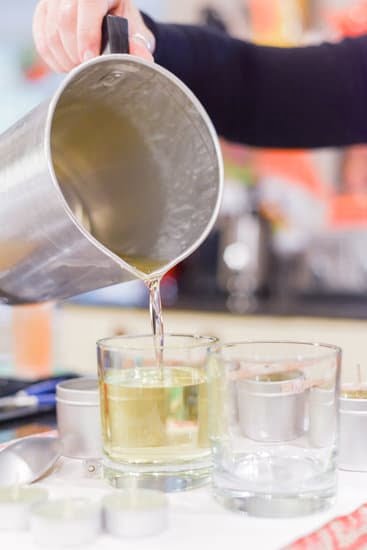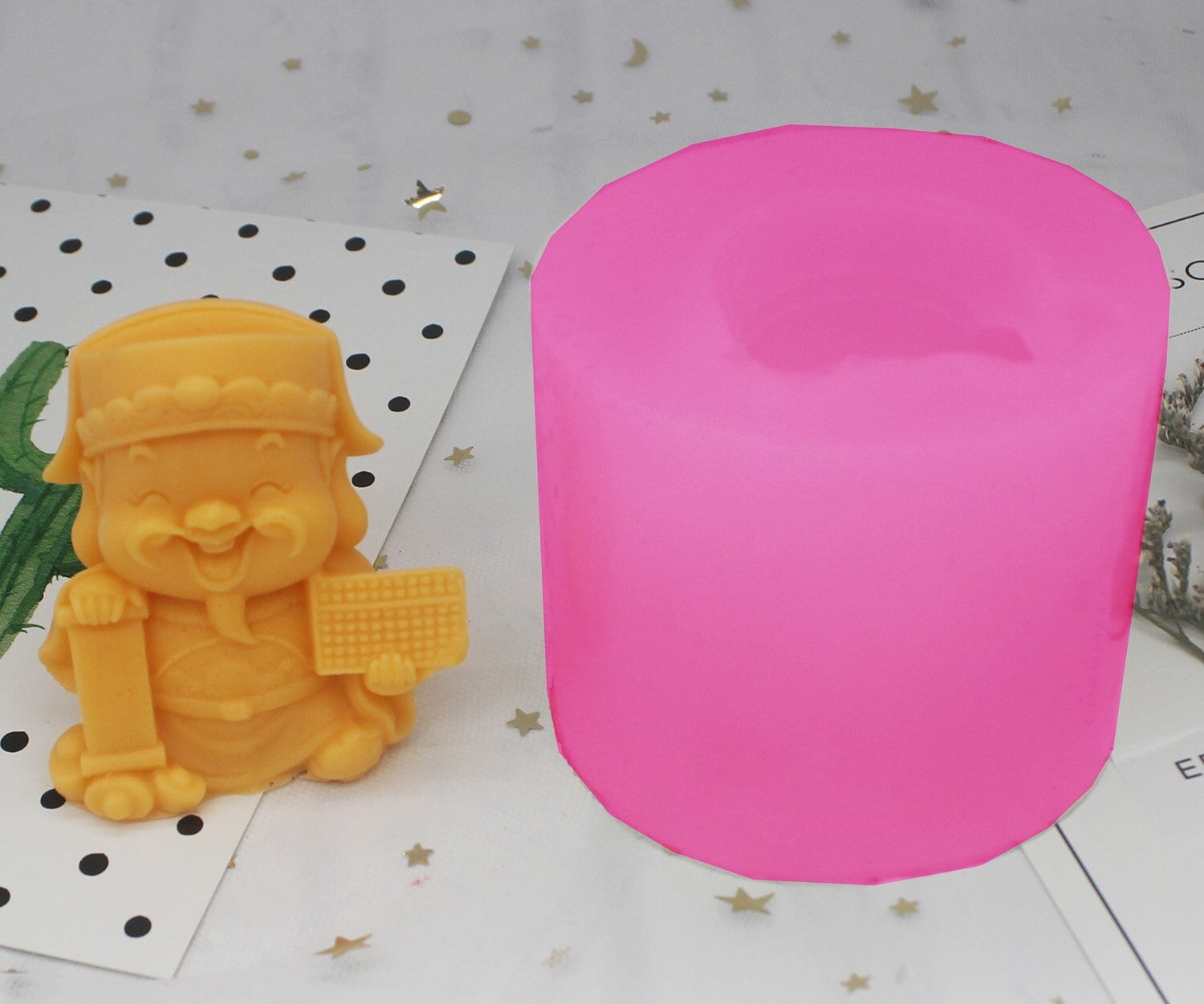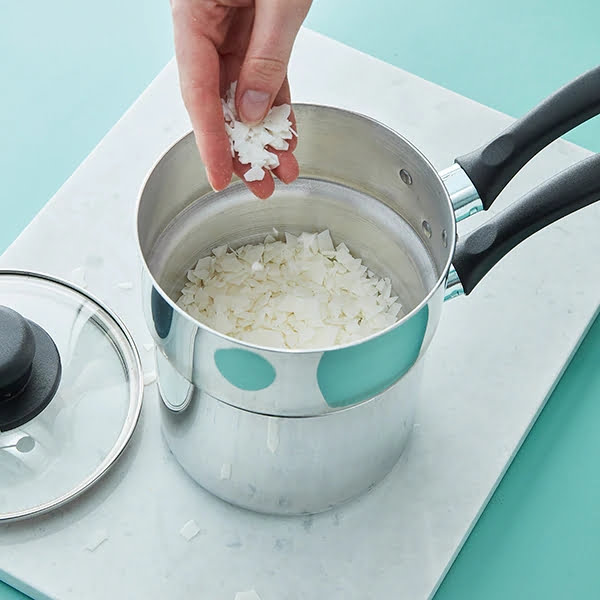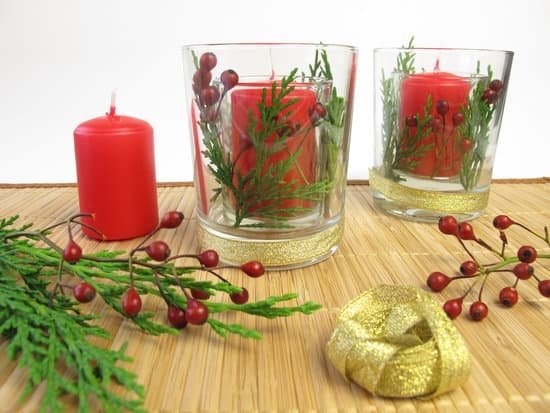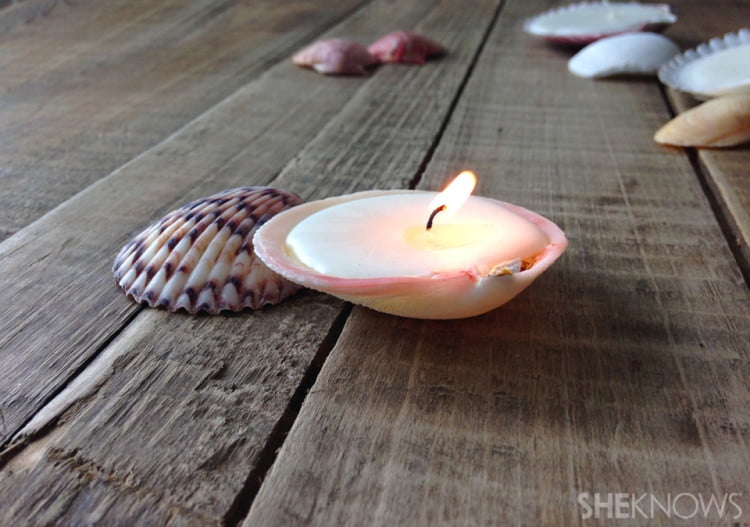Candle making is a beloved craft that allows individuals to create beautiful and aromatic works of art. A crucial element in this creative process is the fragrance used, as it adds an enchanting scent to the finished candles.
However, you may have come across the term “15 fragrance” while exploring candle making techniques and wondered what it means. In this article, we will delve into the concept of fragrance strength in candle making and provide a comprehensive understanding of what “15 fragrance” entails.
Fragrances play a vital role in candle making, as they are responsible for creating captivating scents that enhance the ambiance of any space. The strength of a fragrance refers to its intensity or potency, which determines how strong or subtle the scent will be when the candle burns. Depending on personal preferences or desired effects, candle makers often strive to achieve specific fragrance strengths to suit their projects.
The term “15 fragrance” holds significance in candle making and is commonly referenced when discussing scent strength. It denotes a particular level of intensity that can greatly impact the overall experience of burning a scented candle. By understanding what “15 fragrance” means and how it influences your creations, you can harness its power to create beautifully scented candles that captivate the senses.
The Basics of Fragrance Strength
Fragrance strength is a crucial aspect of candle making, determining the intensity and longevity of the scent in the finished product. It refers to the level of concentration or potency of the fragrance oil used in the candle. Understanding how to measure and comprehend fragrance strength is essential for creating candles with desired scent throw.
In candle making, fragrance strength is measured using various units such as percentage, parts per million (PPM), or drops per pound (DPP). The percentage is the most common unit used to quantify fragrance concentration and represents the percentage of fragrance oil relative to other ingredients like wax. For example, a 10% fragrance load means that 10% of the total weight of ingredients in the candle is comprised of fragrance oil.
Measuring fragrance strength by PPM provides a more precise measurement and is often used by large-scale manufacturers. It indicates the number of parts (by weight) a particular substance exists within one million parts of the whole. Similarly, DPP measures fragrance strength in terms of how many drops of fragrance oil are needed per pound of wax.
The concentration level plays a significant role in determining how strong or subtle the scent will be when the candle is burned. Higher concentrations result in stronger fragrances that can fill larger spaces, while lower concentrations produce more subtle scents suitable for smaller rooms or intimate settings. Candle makers can experiment with different levels of fragrance strength to achieve their desired scent throw and overall sensory experience.
| Unit | Description |
|---|---|
| Percentage | Represents the percentage of fragrance oil relative to other ingredients like wax. |
| Parts per million (PPM) | Indicates the number of parts (by weight) a particular substance exists within one million parts of the whole. |
| Drops per pound (DPP) | Measures fragrance strength in terms of how many drops of fragrance oil are needed per pound of wax. |
To determine the appropriate fragrance strength for a candle, it’s essential to consider factors such as the size and space where the candle will be used, personal preferences, and the specific scent throw desired. Larger rooms or open spaces may require higher fragrance concentrations, while smaller rooms or enclosed areas may benefit from lower concentrations to avoid overwhelming scents.
Additionally, the type of fragrance oil used can influence fragrance strength. Some scents naturally have stronger notes than others, requiring lower concentrations to achieve a desired scent throw. Experimentation and testing different oils at varying strengths is key to finding the perfect balance for each individual candle-making project.
Understanding and measuring fragrance strength provides candle makers with valuable knowledge for creating candles that deliver captivating scents. It allows for customization based on personal preferences and ensures that each candle is a unique olfactory experience. With this understanding, candle enthusiasts can confidently explore various fragrances and confidently create high-quality scented candles.
Decoding “15 Fragrance” in Candle Making
In the world of candle making, understanding fragrance strength is crucial for creating high-quality scented candles. One term that often pops up in discussions among candle makers is “15 fragrance.” But what exactly does it mean? In this section, we will unravel the meaning behind “15 fragrance” and delve into its significance in candle making.
When we talk about “15 fragrance,” we are referring to a specific concentration or percentage of fragrance oil used in the candle making process. Candle fragrances are typically measured by their percentage of fragrance oil per weight of wax in the candle. This measurement is commonly referred to as the “fragrance load”.
In the case of “15 fragrance,” it means that the candle contains 15% fragrance oil and 85% wax or other additives. The numerical value, in this case, represents the proportion or ratio of fragrance oil used in relation to the total weight of the candle. The higher the percentage, the stronger the scent throw will be when the candle is lit.
Using a standardized measurement like “15 fragrance” can help ensure consistency in scent intensity across different candles made with various fragrances and formulations. It provides a benchmark for both professional and hobbyist candle makers to create candles with predictable scent strengths.
So why is knowing about “15 fragrance” important? Understanding this concept allows candle makers to have more control over scent throw and enables them to fine-tune their creations according to their customers’ preferences. Whether you prefer candles with a strong aroma that quickly fills a room or ones with a subtle, lingering scent, being able to decipher and utilize “15 fragrance” measurements can help you achieve your desired results.
To further enhance your knowledge on fragrance strength in candle making, let’s explore factors that influence scent throw, techniques for selecting fragrances, and best practices for maximizing scent intensity. By mastering these aspects, you can elevate your candle making journey and create candles that truly captivate the senses.
Factors Influencing Fragrance Strength
How Different Candle Ingredients Affect Fragrance Strength
The fragrance strength in candles is greatly influenced by the choice of ingredients used in their formulation. Each component plays a significant role in how well the fragrance is dispersed and how strong it will be when the candle is lit. One important factor to consider is the type of wax used.
Different waxes have varying scent throw abilities, with some allowing for better diffusion of fragrance oils compared to others. For instance, soy wax has been known to provide better scent throw as it has a lower melting point and can hold larger amounts of fragrance oil. On the other hand, paraffin wax may have a weaker scent throw but offers good heat resistance.
Another crucial ingredient that affects fragrance strength is the choice of wick. The size and material of the wick can impact how efficiently the fragrance is released into the surrounding environment when the candle burns.
A properly sized wick will allow for complete combustion of the wax, ensuring optimal release of fragrance molecules into the air. Additionally, selecting a wick made from natural materials like cotton or hemp can enhance scent throw as these materials do not interfere with the aroma.
Lastly, even the container material can influence fragrance strength. Non-porous containers made from glass or metal tend to retain heat better and help trap and diffuse fragrances more effectively than porous containers such as certain types of ceramics or wood.
The Role of Fragrance Load and Formulation in Scent Intensity
Fragrance load refers to the amount or percentage of fragrance oil added to a candle’s formula relative to its total weight. It directly impacts scent intensity, as higher fragrance loads generally result in stronger smelling candles. However, there is a delicate balance when it comes to fragrance load because exceeding recommended levels can lead to issues such as poor burning performance or tunneling.
Formulation also plays a crucial role in determining scent intensity. This includes the ratio of fragrance oil to other ingredients in the candle, such as wax and additives. Candle makers can experiment with different formulations to achieve the desired scent strength. For example, increasing the amount of fragrance oil relative to other ingredients can result in a more potent scent.
It is important for candle makers to carefully consider the balance between fragrance load and formulation to achieve optimal fragrance strength without compromising other aspects of candle quality. Testing small batches with varying fragrance loads and formulations can help determine the ideal combination for achieving the desired scent intensity in candles.
Selecting Fragrance for Your Candle Making Projects
Choosing the right fragrance for your candle making projects is crucial in determining the desired scent strength and overall quality of your candles. With so many options available, it can be overwhelming to find the perfect fragrance that suits your preferences and achieves the desired scent throw. In this section, we will provide you with some helpful tips on selecting the appropriate fragrance for your candle making endeavors.
Consider the Size and Space
When selecting a fragrance for your candles, it is important to consider the size and space where the candle will be used. A smaller room or enclosed space may require a stronger fragrance to fill the area effectively, while a larger room may require a lighter scent to avoid overpowering the space. Take into account whether your candle will be placed in a bedroom, living room, bathroom, or any other space to help guide your fragrance choice.
Factors to Consider
There are several factors you should consider when choosing a fragrance based on the desired scent throw. Familiarize yourself with different types of fragrances such as floral, fruity, woody, or fresh scents to determine which ones resonate with you and your customers. It is also essential to consider who your target audience is and their preferences in scents.
Additionally, pay attention to how well certain fragrances perform in candle making. Some fragrances hold up better in hot wax than others and maintain their strength throughout burning. Research reviews or ask other candle makers about their experiences with specific fragrances before making a decision.
Testing Fragrances
To ensure that you choose the best fragrance for your candles, it is recommended to test different scents before committing to a large batch. Purchase small amounts of various fragrances from reputable suppliers and make sample candles using each one. Burn these samples in different rooms or spaces within your home to evaluate how well they fill the area with scent.
You can also distribute these sample candles to friends, family, or trusted customers and gather feedback on their preferences. Keep detailed notes about each fragrance’s performance, including its scent throw and any other observations. By conducting thorough testing, you can make informed decisions about which fragrances will work best for your candle making projects.
Remember that the fragrance you choose is a personal preference, but it should also align with your target market and adhere to high-quality standards. Taking the time to select the right fragrance will ultimately enhance your candle making journey and contribute to the creation of high-quality scented candles that delight your customers.
Achieving the Ideal Fragrance Balance
Creating custom fragrances by blending multiple scents is a popular technique in candle making. It allows candle makers to craft unique and personalized scents that cannot be found in ready-made fragrance oils. By experimenting with different combinations of fragrances, you can achieve the ideal fragrance balance for your candles, resulting in an enticing aroma that will delight your customers.
One technique for blending fragrances is to mix essential oils or fragrance oils together. This can be done by combining different scents in predetermined proportions to create a completely new fragrance. To ensure accurate measurements, using a scale is recommended. Take note of the ratio between each fragrance used so that you can replicate the blend later if desired.
Another method for achieving a well-balanced scent profile is layering fragrance notes. This technique involves adding different scents at different stages during the candle-making process. For example, you may choose to pour one scent as a base layer, then add another scent on top of it once it has cooled and solidified slightly. Layering fragrances adds depth and complexity to the overall aroma of the candle.
When experimenting with mixing and blending techniques, it is crucial to consider compatibility between fragrances. Certain scents may not work well together or may produce unpleasant combinations when blended. Therefore, it is always advisable to conduct small test batches before committing to large-scale production.
In summary, achieving the ideal fragrance balance through mixing and blending techniques can elevate your candle-making projects to new heights. By customizing your own unique scents, you have the opportunity to set yourself apart from other candle makers while delivering captivating aromas that will captivate your customers’ senses.
Maximizing Fragrance Strength
When it comes to candle making, one of the most important factors to consider is fragrance strength. The fragrance is what gives candles their unique scent and creates a pleasing ambiance in any space. Maximizing fragrance strength ensures that your candles will have a strong and long-lasting scent throw, filling the room with delightful aromas. In this section, we will discuss some best practices for candle making that can help you achieve optimal fragrance strength.
One of the key aspects of maximizing fragrance strength is proper temperature control during the fragrance addition process. When adding fragrance oils to your melted wax, it’s important to do so at the right temperature. Most often, it is recommended to add the fragrance oil when your wax is around 185°F (85°C).
Adding fragrance oil at higher temperatures can cause the scent to evaporate too quickly, resulting in a weaker throw. On the other hand, adding fragrance oil at lower temperatures may lead to poor blending and distribution of the scent throughout the candle.
Another important factor in maximizing fragrance strength is allowing your candles to cure for an appropriate amount of time. Curing refers to the process of allowing candles to rest and develop their scent after they have been poured and cooled down. While it can be tempting to start using or selling your candles immediately after they have hardened, giving them time to cure can significantly enhance their fragrance strength.
The general rule of thumb is to let your candles cure for at least 24-48 hours before burning them. However, some fragrances may require a longer curing time for optimal results.
In addition to proper temperature control and curing time, there are other best practices you should follow to maximize fragrance strength in your candles. One such practice is using high-quality ingredients that are compatible with your chosen fragrances. Different wax types, wick choices, and container materials can all influence how well your candles release their scents.
It’s important to select ingredients that complement your fragrance oils and enhance their overall performance. Additionally, paying attention to the fragrance load or concentration in your candle’s formulation can also impact scent throw. Adjusting the amount of fragrance oil used can help you achieve the desired intensity of scent in your candles.
By following these best practices, you can ensure that your candles have maximum fragrance strength and provide a delightful olfactory experience. Proper temperature control during the fragrance addition process, allowing for adequate curing time, and using high-quality ingredients are all essential in creating scented candles with a strong and long-lasting scent throw. Remember to experiment and explore different techniques and formulations to discover what works best for you and your candle making endeavors.
Troubleshooting Fragrance Issues
When it comes to candle making, achieving the perfect fragrance strength can sometimes be a challenge. Whether you’re experiencing a weak scent throw or an overpowering fragrance, it’s important to understand common problems and their solutions in order to create high-quality scented candles. In this section, we will explore some of the most common fragrance issues encountered in candle making and provide troubleshooting solutions.
One common problem that candle makers often face is a weak scent throw. This occurs when the fragrance in the candle does not adequately fill the space with its aroma. There are several possible reasons for this issue. Firstly, it could be due to using too little fragrance oil in your candle formulation. To solve this problem, try increasing the fragrance load by adding a higher concentration of fragrance oil during the blending process.
Another factor that can contribute to a weak scent throw is poor wick selection. The wick plays a crucial role in distributing heat evenly across the surface of the wax, which helps release the fragrance molecules into the air.
If you are using a wick that is too small for your candle size or type of wax, it may not generate enough heat to fully disperse the scent. Consider choosing a larger or differently designed wick that is better suited for your specific needs.
On the other hand, some candle makers may encounter an issue where their candles have an overpowering fragrance. This can be problematic as it can overwhelm those with sensitive noses or simply detract from the overall experience of burning the candle. One possible cause of an overpowering scent is using too much fragrance oil in your formulation. In this case, reducing the fragrance load by using less oil may help achieve a more balanced scent profile.
In addition to adjusting fragrance load, it’s worth considering other factors such as ambient temperature and curing time. Both temperature control during the fragrance addition process and adequate curing time play significant roles in enhancing fragrance strength. If you find that your candles have weak or overpowering scents, it may be beneficial to experiment with different temperature settings and varying curing times to achieve the ideal balance.
Conclusion
In conclusion, understanding fragrance strength is essential for creating high-quality scented candles. Throughout this article, we have explored the basics of fragrance strength in candle making, decoded the meaning of “15 fragrance,” and discussed factors that influence scent intensity. We have also provided tips on selecting fragrances, achieving the ideal fragrance balance, maximizing fragrance strength, and troubleshooting common fragrance issues.
By having expert knowledge of fragrance strength, you can elevate your candle making journey to new heights. The right combination of scents can evoke a range of emotions and create a captivating atmosphere. Experimenting with different fragrances and blending techniques allows you to personalize your candles and offer unique products to your customers or loved ones.
Remember to consider the size and space where the candle will be used when selecting a fragrance. This ensures that the scent throw is neither too weak nor overpowering for the environment. Additionally, proper temperature control during the fragrance addition process and appropriate curing time are crucial for maximizing scent throw in candles.
As you continue on your candle making journey, keep in mind that understanding fragrance strength is an ongoing learning process. Be open to experimentation and exploration with different fragrances. Don’t be afraid to try new combinations and adjust proportions to find your perfect scent profile. With expert knowledge of fragrance strength, you can create candles that leave a lasting impression on everyone who experiences them.
Frequently Asked Questions
What does 10% fragrance mean in candle making?
In candle making, 10% fragrance refers to the percentage of fragrance oil used in relation to the total weight of the candle. It means that for every pound or ounce of wax used, 10% of that weight should be comprised of fragrance oil.
This percentage is a commonly recommended amount in the industry and can help ensure a pleasant aroma when the candle is burned.
How much is 10% fragrance load?
A 10% fragrance load denotes the specific measurement or quantity of fragrance oil that should be added to a candle during the manufacturing process. To calculate this, one must determine what 10% of the total weight of wax being used amounts to and then add that exact quantity of fragrance oil into the melted wax during production.
This ensures that the resulting candle will have an appropriate level of scent without being overpowering.
What is the best percentage of fragrance in candles?
Determining the best percentage of fragrance in candles can depend on personal preference as well as variables such as the type and size of candle being made. While some may find a higher concentration more appealing, it’s generally suggested to not exceed a 10% fragrance load for various reasons.
Using too much fragrance oil can lead to issues like poor burn quality, excess sooting, or even safety hazards if volatile substances are present in high quantities. Ultimately, finding the ideal balance between scent strength and overall candle performance is crucial for creating an enjoyable experience for customers.

Welcome to my candle making blog! In this blog, I will be sharing my tips and tricks for making candles. I will also be sharing some of my favorite recipes.

